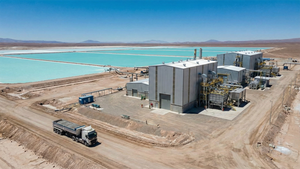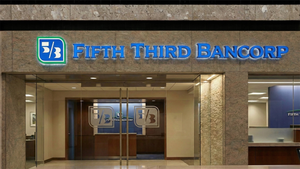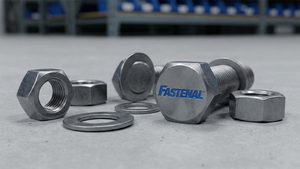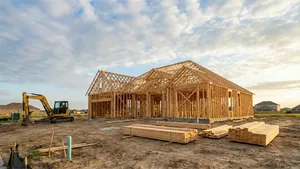Consolidating Joint Programmable Fuze Production
Optimizing Cost Structure to Align With Highest Return Growth Opportunities
(NYSE: KAMN) Kaman Corporation (the “Company”) today announced actions to continue reshaping the Company’s portfolio, enhance operational efficiency, improve financial performance and position Kaman for long-term growth and sustainable value creation.
“Building on Kaman’s long track record of innovation and active portfolio management, we continue to take decisive actions to unlock value and build a more durable and resilient company,” said Ian K. Walsh, Chairman, President and Chief Executive Officer. “Recent initiatives include investing in talent, segmenting our businesses, expanding the capabilities of our Engineered Products segment with the acquisition of Aircraft Wheel & Brake, selling our underperforming UK and Mexico businesses, consolidating operations at our Jacksonville Structures facility, investing in our autonomy partner, Near Earth Autonomy and launching our new KARGO UAV program.”
Mr. Walsh added, “We know there is more work to do, and as we continue to transform Kaman, we are focusing our investments on the highest growth and highest margin businesses. Our goal is to position Kaman to deliver consistent revenue growth, EBITDA margin expansion, enhanced free cash flow generation and improved return on invested capital, which we believe will drive sustainable, profitable growth and superior shareholder returns.”
Actions Planned by Kaman Include:
- Consolidating Joint Programmable Fuze (“JPF”) production: As the JPF program winds down, the Company will consolidate the production of fuzes at Kaman’s Middletown, Connecticut facility, which has the potential capacity to deliver against future direct commercial sales (“DCS”). Given the completion of the Joint Air-to-Surface Standoff Missile (“JASSM”) program and evolving market trends, the Orlando facility is expected to fully cease operations by the end of 2024. The actions taken with respect to Orlando are expected to result in annualized run-rate cost savings of approximately $12 to $15 million and total pre-tax restructuring charges of $8 to $10 million.
- Optimizing cost structure to ensure alignment with highest return growth opportunities: Kaman will continue improving its legacy structures programs, enhancing overall execution and focusing on winning new and more profitable programs, including growing the Company’s aftermarket portfolio. In all businesses, Kaman will maintain focus on continuous improvement, reducing variation and inefficiencies in the Company’s value streams. Kaman is also in the process of streamlining and re-sizing the corporate organization to better reflect the current size of the Company, while also executing SG&A reductions at the strategic business unit (“SBU”) level driven by reducing layers, consolidating support functions, eliminating redundancies between corporate and SBU, among other efforts.
These actions support Kaman’s objective to de-lever its balance sheet, improve net working capital, expand gross margins and increase overall EBITDA and free cash flow generation. The Company expects these combined efforts to result in greater alignment of its cost structure with future growth opportunities, enhancing Kaman’s long-term competitive profile.
As part of Kaman’s portfolio reshaping efforts, the management team continues to evaluate the Company’s business lines and programs with the goal of best positioning Kaman to deliver long-term shareholder value creation. The Company plans to provide an estimate of its annualized cost savings objective as well as an update on its ongoing portfolio shaping and cost reduction efforts early in the first quarter of 2023.
About Kaman
Kaman Corporation, founded in 1945 by aviation pioneer Charles H. Kaman, and headquartered in Bloomfield, Connecticut, conducts business in the aerospace & defense, industrial and medical markets. Kaman produces and markets proprietary aircraft bearings and components; super precision, miniature ball bearings; proprietary spring energized seals, springs and contacts; wheels, brakes and related hydraulic components for helicopters, fixed-wing and UAV aircraft; complex metallic and composite aerostructures for commercial, military and general aviation fixed and rotary wing aircraft; safe and arming solutions for missile and bomb systems for the U.S. and allied militaries; subcontract helicopter work; restoration, modification and support of our SH-2G Super Seasprite maritime helicopters; and manufacture and support of our heavy lift K-MAX® manned helicopter, the K-MAX TITAN unmanned helicopter and the KARGO UAV unmanned aerial system, a purpose built autonomous medium lift logistics vehicle. More information is available at www.kaman.com.
Risks Associated with Forward-Looking Statements
This release contains "forward-looking statements" within the meaning of the safe harbor provisions of the U.S. Private Securities Litigation Reform Act of 1995. Forward-looking statements also may be included in other publicly available documents issued by the Company and in oral statements made by our officers and representatives from time to time. These forward-looking statements are intended to provide management's current expectations or plans for our future operating and financial performance, based on assumptions currently believed to be valid. They can be identified by the use of words such as "anticipate," "intend," "plan," "goal," "seek," "believe," "project," "estimate," "expect," "strategy," "future," "likely," "may," "should," "would," "could," "will" and other words of similar meaning in connection with a discussion of future operating or financial performance. Examples of forward-looking statements include, among others, statements relating to future sales, earnings, cash flows, results of operations, uses of cash and other measures of financial performance.
Because forward-looking statements relate to the future, they are subject to inherent risks, uncertainties and other factors that may cause the Company's actual results and financial condition to differ materially from those expressed or implied in the forward-looking statements. Such risks, uncertainties and other factors include, among others: (i) changes in domestic and foreign economic and competitive conditions in markets served by the Company, particularly the defense, commercial aviation and industrial production markets; (ii) changes in government and customer priorities and requirements (including cost-cutting initiatives, government and customer shut-downs, the potential deferral of awards, terminations or reductions of expenditures to respond to the priorities of Congress and the Administration, or budgetary cuts resulting from Congressional actions or automatic sequestration); (iii) the global economic impact of the COVID-19 pandemic; (iv) risks and uncertainties associated with the successful integration of our Aircraft Wheel and Brake acquisition; (v) changes in geopolitical conditions in countries where the Company does or intends to do business; (vi) the successful conclusion of competitions for government programs (including new, follow-on and successor programs) and thereafter successful contract negotiations with government authorities (both foreign and domestic) for the terms and conditions of the programs; (vii) the timely receipt of any necessary export approvals and/or other licenses or authorizations from the USG; (viii) timely satisfaction or fulfillment of material contractual conditions precedents in customer purchase orders, contracts, or similar arrangements; (ix) the existence of standard government contract provisions permitting renegotiation of terms and termination for the convenience of the government; (x) the successful resolution of government inquiries or investigations relating to our businesses and programs; (xi) risks and uncertainties associated with the successful implementation and ramp up of significant new programs, including the ability to manufacture the products to the detailed specifications required and recover start-up costs and other investments in the programs; (xii) potential difficulties associated with variable acceptance test results, given sensitive production materials and extreme test parameters; (xiii) the receipt and successful execution of production orders under the Company's existing USG JPF contract, including the exercise of all contract options and receipt of orders from allied militaries, but excluding any next generation programmable fuze programs, as all have been assumed in connection with goodwill impairment evaluations; (xiv) the continued support of the existing K-MAX® helicopter fleet, including sale of existing K-MAX® spare parts inventory and the receipt of orders for new aircraft sufficient to recover our investments in the K-MAX® production line; (xv) the accuracy of current cost estimates associated with environmental remediation activities; (xvi) the profitable integration of acquired businesses into the Company's operations; (xvii) the ability to recover from cyber-based or other security attacks, information technology failures or other disruptions; (xviii) changes in supplier sales or vendor incentive policies; (xix) the ability of our suppliers to satisfy their performance obligations, including any supply chain disruptions; (xx) the effects of price increases or decreases; (xxi) the effects of pension regulations, pension plan assumptions, pension plan asset performance, future contributions and the pension freeze, including the ultimate determination of the USG's share of any pension curtailment adjustment calculated in accordance with CAS 413; (xxii) future levels of indebtedness and capital expenditures; (xxiii) compliance with our debt covenants; (xxiv) the continued availability of raw materials and other commodities in adequate supplies and the effect of increased costs for such items; (xxv) the effects of currency exchange rates and foreign competition on future operations; (xxvi) changes in laws and regulations, taxes, interest rates, inflation rates and general business conditions; (xxvii) future repurchases and/or issuances of common stock;(xxviii) the occurrence of unanticipated restructuring costs or the failure to realize anticipated savings or benefits from past or future expense reduction actions; (xxix) the ability to recruit and retain skilled employees. The foregoing list of factors is not exhaustive. Additional risks and uncertainties that could cause our actual results to differ materially from those expressed in the forward-looking statements are identified in our reports filed with the Securities and Exchange Commission, including our Annual Reports on Form 10-K, our Quarterly Reports on Form 10-Q and our Current Reports on Form 8-K. The forward-looking statements included in this release are made only as of the date of this release. Readers are cautioned not to put undue reliance on forward-looking statements, and Kaman does not undertake any obligation to update the forward-looking statements to reflect subsequent events or circumstances.
View source version on businesswire.com: https://www.businesswire.com/news/home/20221208005565/en/
Contacts
Kaman Corporation
Kristen Samson
Vice President and Chief Marketing Officer
860-243-6330
Kristen.Samson@kaman.com
Kary Bare
860-243-7485
Investor Relations
Kary.Bare@kaman.com




